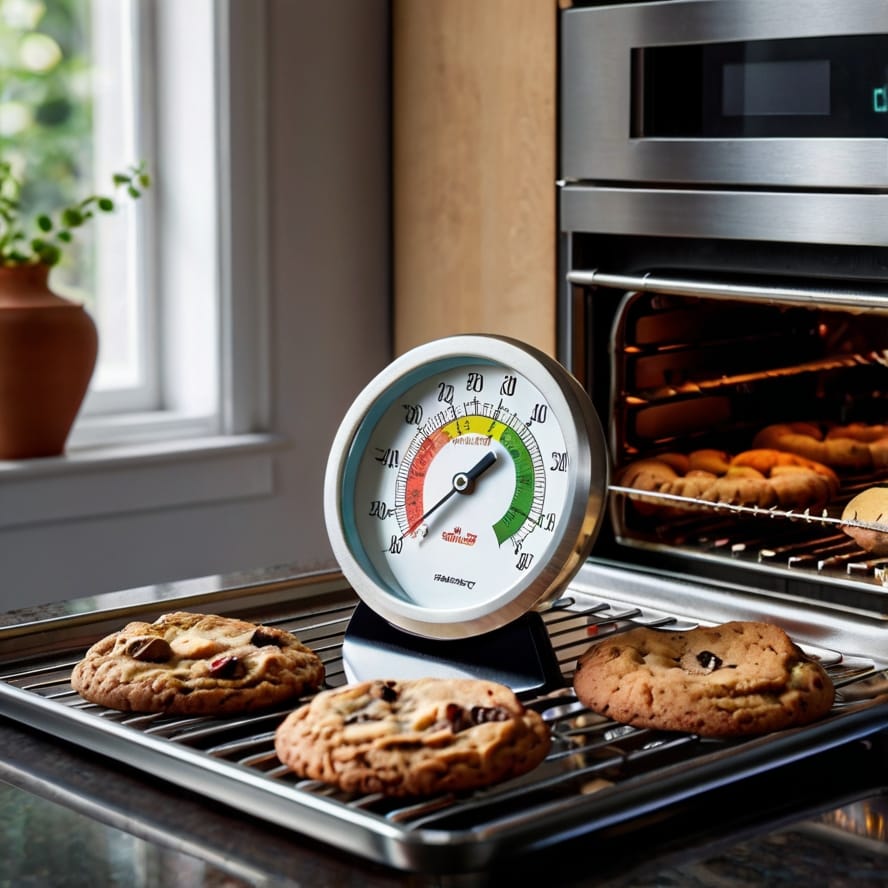Introduction
One of the most critical yet overlooked aspects of successful baking is the oven temperature guide. Getting the temperature right can mean the difference between a golden, perfectly risen cake and a dense, undercooked disaster. While ingredients and mixing methods are crucial, knowing how to properly use and control your oven is just as important in ensuring delicious, consistent results.
This comprehensive oven temperature guide will help you understand how heat impacts your baked goods, how to optimize your oven’s performance, and how to troubleshoot common baking issues. Whether you’re new to baking or looking to fine-tune your skills, this guide covers everything you need to bake with confidence.
Table of Contents:
- Introduction
- Why Oven Temperature Matters
- Understanding Your Oven
- Common Baking Temperatures for Different Recipes
- Baking Techniques for Consistent Results
- Tips for Testing and Adjusting Oven Temperature
- Conclusion
Why Oven Temperature Matters
Oven temperature is at the heart of every baking recipe. Whether you’re making a batch of cookies, a loaf of bread, or a delicate soufflé, the temperature dictates how your food cooks. Baking is a science, and temperature plays a key role in how ingredients react to heat.
If your oven is too hot, your baked goods can brown too quickly on the outside while remaining raw in the center. Too cool, and they may not rise or develop the proper texture. Following an oven temperature guide ensures you’re providing the right environment for your ingredients to work their magic.

For more on the science of baking, see our post on gluten development and hydration.
You also might be interrested by these posts :
Top 5 Gluten-Free Flours
Whole Wheat Bread
Crispy Foccacia Bread
Understanding Your Oven
Before diving into specific baking temperatures, it’s important to understand that not all ovens are created equal. Even if you set your oven to a specific temperature, there’s a good chance it might not be accurate. Many home ovens can fluctuate by as much as 20-30°F from the set temperature, which can significantly affect your results.
To get the most out of your oven, invest in an oven thermometer. This inexpensive tool allows you to monitor your oven’s true internal temperature, ensuring it’s running as it should. Also, keep in mind that ovens vary in how they distribute heat. Hot spots can cause uneven baking, which is why rotating your pans halfway through baking is a common tip.
Need help troubleshooting your oven? Check out this guide on common oven issues.
Common Baking Temperatures for Different Recipes
Different baked goods require different oven temperatures to achieve optimal results. Here’s a quick reference of typical temperatures for popular recipes:
- Cookies: 325°F to 375°F (160°C to 190°C)
- Cakes: 325°F to 350°F (160°C to 175°C)
- Bread: 375°F to 475°F (190°C to 245°C)
- Pies: 375°F to 425°F (190°C to 220°C)
- Pastries: 375°F to 400°F (190°C to 200°C)
Baking temperatures are not set in stone. Higher temperatures result in faster browning and crisping, making them ideal for items like pizzas and cookies that benefit from a shorter baking time. Lower temperatures are better for delicate items like custards, cakes, and cheesecakes, where a slow, gentle bake is essential.
Baking Techniques for Consistent Results
No matter the recipe, there are several baking techniques that can help you achieve more consistent results in the kitchen.
Preheating
Preheating is critical to ensure your oven reaches the correct temperature before your food goes in. Putting baked goods into a cold or under-heated oven can cause them to cook unevenly. Always allow your oven to preheat for at least 15-20 minutes, or until it reaches the desired temperature on your oven thermometer.
Tip: If your oven takes a long time to preheat, open it sparingly while baking to avoid losing heat.

Rack Positioning
Where you place your baking tray in the oven can affect how evenly your food cooks. Most recipes call for placing items on the middle rack, which provides the most even heat distribution. For items that need more direct browning, like pizza or roasted vegetables, place them on the top rack. On the other hand, delicate bakes like cakes may benefit from being positioned on the lower rack to avoid over-browning.
Convection vs. Conventional Ovens
A convection oven uses a fan to circulate air around the food, resulting in faster, more even baking. Conventional ovens, by contrast, rely solely on radiating heat from the top and bottom. If using a convection oven, you’ll typically need to reduce the baking temperature by 25°F (15°C) from what the recipe states.
Tip: Use convection for crispy, golden items like cookies, pastries, and roasted vegetables, but switch to conventional for delicate bakes like soufflés or cakes, where even heat is critical.
Tips for Testing and Adjusting Oven Temperature
Even with the best oven, it’s important to be able to test and adjust as needed during baking. Here are some handy tips to ensure perfect results every time:
- Use an Oven Thermometer: Place an oven thermometer inside to verify that your oven reaches and maintains the temperature you’ve set. Even the most expensive ovens can be inaccurate!
- Check for Hot Spots: To test for hot spots, place slices of bread on the oven racks and bake at 350°F for about 10 minutes. If some slices toast faster than others, you’ve identified a hot spot.
- Rotate Pans: Rotating your pans halfway through baking ensures even exposure to heat and avoids overbrowning one side. This technique is especially useful for large items like cakes and loaves of bread.
- Adjust Mid-Bake: If you notice that your food is browning too quickly but isn’t done in the middle, lower the oven temperature by 25°F. Conversely, if your baked goods are cooking too slowly, increase the temperature slightly to finish them off.
- Baking Time Adjustment: The same recipe can take different baking times depending on your oven’s quirks. Always start checking on your food 5-10 minutes before the recipe says it should be done, using visual cues like golden brown tops and set centers.
Conclusion
Mastering your oven’s temperature is the foundation for achieving perfectly baked goods, from cookies to cakes to bread. Armed with this oven temperature guide, you’ll be better equipped to handle the intricacies of baking, understand the nuances of your oven, and make adjustments as needed. Remember, baking is both an art and a science, and the more you familiarize yourself with your oven’s behavior, the more confident you’ll become in creating delicious results every time.

